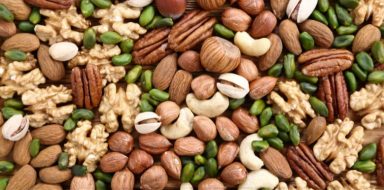EoE Insights
Eosinophilic esophagitis (EoE) is a chronic immune-mediated disorder of the esophagus characterized by inflammation caused by eosinophils, a type of white blood cell. This condition can lead to various symptoms and requires careful management through diet and medical treatments. This article provides an overview of EoE, its signs and symptoms, recommended diets and available treatment options like EOHILIA, a prescription medication used to treat eosinophilic esophagitis (EoE).
Foods to Avoid that Can Cause Throat Inflammation
- Spicy foods.
- Acidic foods (e.g., citrus fruits, tomatoes).
- Fried foods.
- Dairy products.
- Processed foods.
- Sugary foods and beverages.
- Alcohol.
- Caffeinated drinks.
- Gluten-containing foods.
- Nuts and seeds.
- Red meat.
- Artificial additives and preservatives.
Did you know there are certain foods to avoid with eosinophilic esophagitis? Keep reading to learn more about their triggers.
Signs and Symptoms of Eosinophilic Esophagitis (EoE)
Difficulty Swallowing
Also known as dysphagia, difficulty swallowing is a common symptom of EoE, especially with solid foods.
Food Impaction
Food becoming stuck in the esophagus due to narrowing (strictures) caused by inflammation.
Do you know what foods to avoid when breastfeeding? Read on to learn about the top foods that you should stay away from.
Chest Pain
Pain or discomfort in the chest, often behind the breastbone, particularly after eating.
Reflux Symptoms
Heartburn and regurgitation may occur, similar to gastroesophageal reflux disease (GERD), but with inadequate response to acid-suppressing medications.
Abdominal Pain
Some individuals with EoE experience abdominal pain, which can be chronic or episodic.
Failure to Thrive (in Children)
Young children with EoE may have difficulty gaining weight or growing at a normal rate.
Nausea and Vomiting
These symptoms can occur, particularly in children.
Food Allergies
EoE is commonly associated with food allergies, and individuals may have other allergic conditions like asthma or eczema.
Diets for Eosinophilic Esophagitis
- Elimination diet: The primary dietary approach for EoE involves eliminating specific foods that are identified through allergy testing or by systematically removing common allergens. This includes milk, wheat, soy, eggs, nuts and seafood.
- Six-food elimination diet: A more restrictive diet that removes six common allergens: milk, wheat, soy, eggs, nuts and seafood. Foods are gradually reintroduced to identify triggers.
- Elemental diet: A liquid diet consisting of amino acid-based formulas that provide all necessary nutrients. This diet is typically used when other dietary measures fail.
- Empiric four-food elimination diet (FFED): Eliminates milk, wheat, egg and soy, which are the most common triggers of EoE.
Treatments for Eosinophilic Esophagitis
Medications
- Proton Pump Inhibitors (PPIs): These medications reduce stomach acid and may help manage symptoms in some individuals.
- Corticosteroids: Topical steroids in the form of swallowed aerosolized formulations (e.g., budesonide) or oral systemic steroids can reduce esophageal inflammation.
- Dilation: In cases where there are strictures (narrowing) of the esophagus, dilation can be performed to widen the esophagus and alleviate symptoms.
- Biologic therapies: Newer treatments, such as biologic agents targeting specific pathways involved in allergic inflammation (e.g., anti-IL-5 therapy), are being investigated for their effectiveness in treating EoE.
- Allergy immunotherapy: In some cases, immunotherapy to desensitize individuals to specific food allergens may be considered.
EoE Demystified
Eosinophilic esophagitis is a chronic inflammatory condition of the esophagus that requires ongoing management to alleviate symptoms and prevent complications. Treatment strategies include dietary modifications, medications and in some cases, procedures to relieve strictures. Working closely with healthcare providers, including allergists and gastroenterologists, is essential to develop an individualized treatment plan that addresses the specific needs and triggers of each patient. With proper management, many individuals with EoE can achieve symptom control and lead fulfilling lives.
Take a look at understanding more about tardive dyskinesia.








